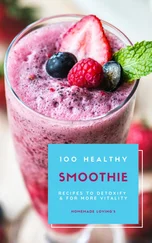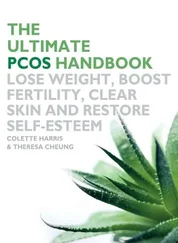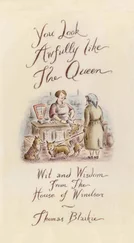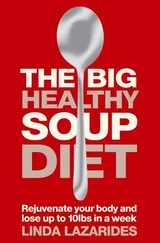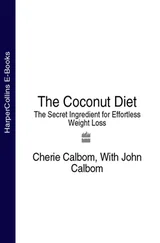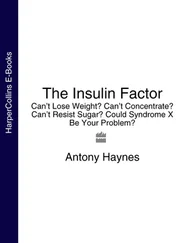Good food sources: Oily fish, red meat, eggs, soya milk, tofu and mushrooms. The body also produces its own vitamin D when exposed to sunlight (20 minutes without sunscreen three times a week minimum).
VITAMIN E
What it does: Helps maintain healthy skin and eyes and upholds our immune system.
Good food sources: Almonds, avocados, vegetable oil (such as safflower and sunflower), sunflower seeds, spinach.
IRON
What it does: Iron is important in the manufacture of red blood cells, which transport oxygen round the body.
Good food sources: Red meat, dark green veg (oh, that must mean broccoli), beans, nuts, seeds and whole-grains, such as brown rice.
IODINE
What it does: Helps the thyroid gland produce thyroxine to stimulate and regulate metabolism.
Good food sources: Seafood, all seaweed, such as nori, wakame and kelp, potatoes, bananas, cranberries and strawberries.
VITAMIN K
What it does: Helps maintain healthy blood clotting and promotes bone density and strength by helping vitamin D do its job.
Good food sources: Kale, cabbage, Brussels sprouts, broccoli and vegetable oils, such as olive and soybean.

FLUIDS
We’ve covered the food groups and those vital vitamins and minerals. Let’s look at hydration next. (No, not gin.)
Your blood runs through your veins, right? You want it to course freely, not dribble and stumble. The more hydrated you are, the more your blood will flow, possibly even gush, around your body delivering all those essentials goodies we’ve been talking about to the cells for nourishment. On the 21 Day Blast plan I am asking you to drink 2.5–3 litres of water per day. Every day. That means all the processes of your body will be running nicely. Not chugging or spluttering. More purring.
‘What?! 3 litres?! Every day? I’ll never get off the loo!’
Yes, you may wee like you never have before but you’ll get a weird satisfaction from the glorious pale colour. Sort of newly mown hay, rather than sun-kissed straw. Add fresh lime or lemon chunks to your 3 litres to soften the blow; cucumber slices and mint also work well.
Make it a habit. Don’t fight against it, just get on with it. You’ll notice the difference in your skin, in your poo, your energy levels and in the puffiness of your fingers. If you don’t drink enough, your body will hold on for grim death to what it’s got and never let go. It will collect in unsightly pools around your ankles.
There’s more about fluid and fluid retention in Chapter 5. I know . . . you can’t wait.
Right, now let’s find out how all these food facts can actually HELP us lose fat. On to Chapter 2.
Weight lost – 8lb
Inches lost – 9½ (bloody hell!)
Dress size reached – 12
Skin – glowing
Bladder – never seen so much action
Happiness – 10 out of 10
C.W., Bournemouth
Chapter 2
USING FOOD TO HELP US LOSE FAT
‘My eating has improved so much. My plate is now full and I don’t pick between meals. I used to think two rice cakes and some cottage cheese was a good lunch. I think I’d cry now if someone offered me that.’
A.N., Reading
HOW OUR BODIES GET FAT IN THE FIRST PLACE
In order to get into shape on the outside, it’s what we do on the inside that counts. We’ve talked about food groups – here we’re going to look at how those food groups; work together to give us great handfuls of fat where we don’t want them – if we’re not careful. And how we can manipulate our food to ensure they disappear.
The food we eat is broken down for easy transport in the bloodstream to the places that need it. Proteins are broken down into amino acids, carbohydrate into glucose and fats into fatty acids. Too much of any of these can make us fat.
‘So it’s not just the fat we eat that makes those handfuls of fat?’
No. Protein and carbohydrate play their part.
However, balance can be achieved. Read on.
Where we hold our fat depends very much on which sex hormones we have – that is, testosterone and oestrogen. By and large, men tend to hold fat in the abdominal area and women on their hips, thighs and back. All of it is made up of swollen fat cells. (Their posh name is triglycerides). When we talk about losing fat, we are essentially trying to release the fat from those bulging fat cells and set it free into the bloodstream. It then becomes known as free fatty acids and this is the fuel we should be using for all activity if we want a healthy body. So, emptying those fat cells means smaller handfuls of fat.
‘Oooh, goody.’
But there’s a hitch.
PERSUADING THE BODY TO GIVE UP THAT FAT
So if you remember, when you eat carbohydrate it gets converted to glucose and the hormone insulin carries it off to the cells that need it.
The body would much rather use that glucose for its energy than tap into your fat stores, mainly because it requires less effort to transport the glucose than it does to ‘persuade’ the fat from the fat cells.
The trouble comes if your diet is big on carbohydrate (the potatoes, oats, pasta, sugary goodies, cakes, chocolate . . . shall I go on?), then there will be an excess of glucose. Once insulin has finished delivering the glucose to the right places, it turns its attention to this excess. It sweeps it up, and stuffs it into the fat cells where it joins those triglycerides.
So, bigger fat cells again . . . and tighter trousers.
Not only that. Remember the free fatty acids . . . they’re the usable form of our fat wodges floating around in the bloodstream begging to be used up. But oh no. When insulin scoops up the surplus glucose it also takes with it those free fatty acids and they’re returned to the fat cells to become triglycerides again.
Our love handles.
So, broadly speaking, that’s the story. Carbohydrate gets converted into glucose and is transported to the cells that need it. If we eat too much of it (think sofa, telly, large bag of sweets) and don’t use it up, then insulin scoops up the excess, along with the free fatty acids and stuffs it all back into the fat cells. In places we don’t want it.
Result: Your fat cells swell. Your jeans get tight. You feel lethargic and downright cross.
‘So how can food help me release the fat from my fat cells . . . and use it up? Are you saying I should give up carbs?’
Definitely not. Imagine life without it. Your brain would be starved, you’d be drowsy and actually quite miserable. No, instead we’re going to be eating the right kind and the right amount of carbohydrate, and at the right time.
Remember there are different sorts of carbohydrate. As we saw in Chapter 1, the ones that create a quick response from insulin are simple carbs – that’s sugary foods, some fruit and processed foods. They are converted to glucose very quickly and prompt a surge of insulin. The other type are more complex (vegetables, whole-grains, brown rice, oats, potatoes), which take longer to be digested and won’t trigger such a flood of insulin into your bloodstream.
Our plan is this: To stick to eating a lovely mix of protein and fats plus enough complex carbohydrate at the right time. When you exercise, your muscles need glucose and so afterwards your supplies are pretty low. Eating carbohydrate after exercise will ensure that those supplies are refilled. This will also help the muscles recover. And that’s what we’re going to do on Blast. Cue very important statement . . .
You will eat a portion of starchy carbs ONLY in the meal that follows your workout.The glucose produced from that meal will then be enough to top up your newly emptied stores. The rest of the time, the body will depend on those free fatty acids to fuel it through the rest of the day. This means a) no excess glucose being handcuffed to your fat cells and making them bigger, and b) the free fatty acids can roam freely in your bloodstream waiting to be used up.
Читать дальше


